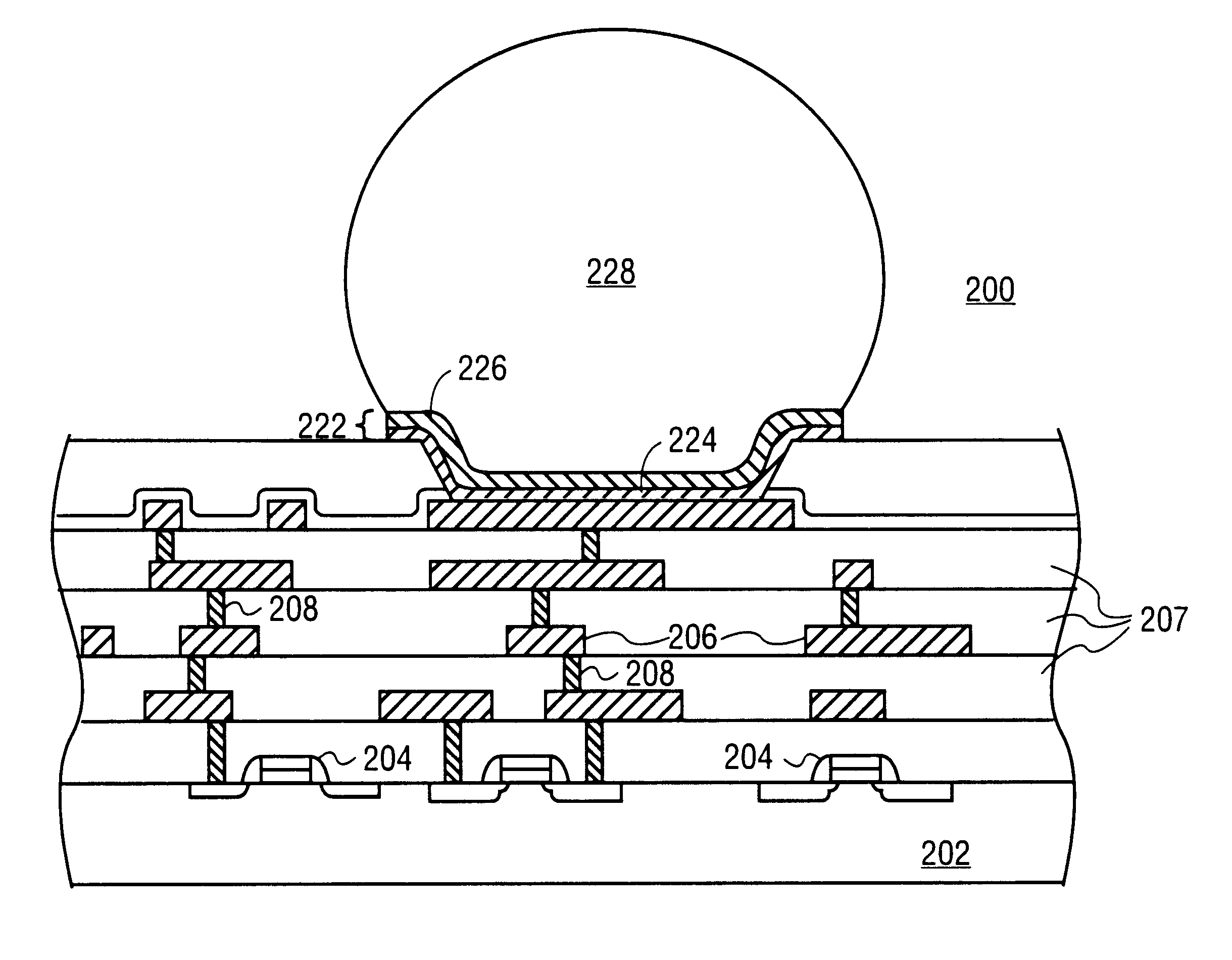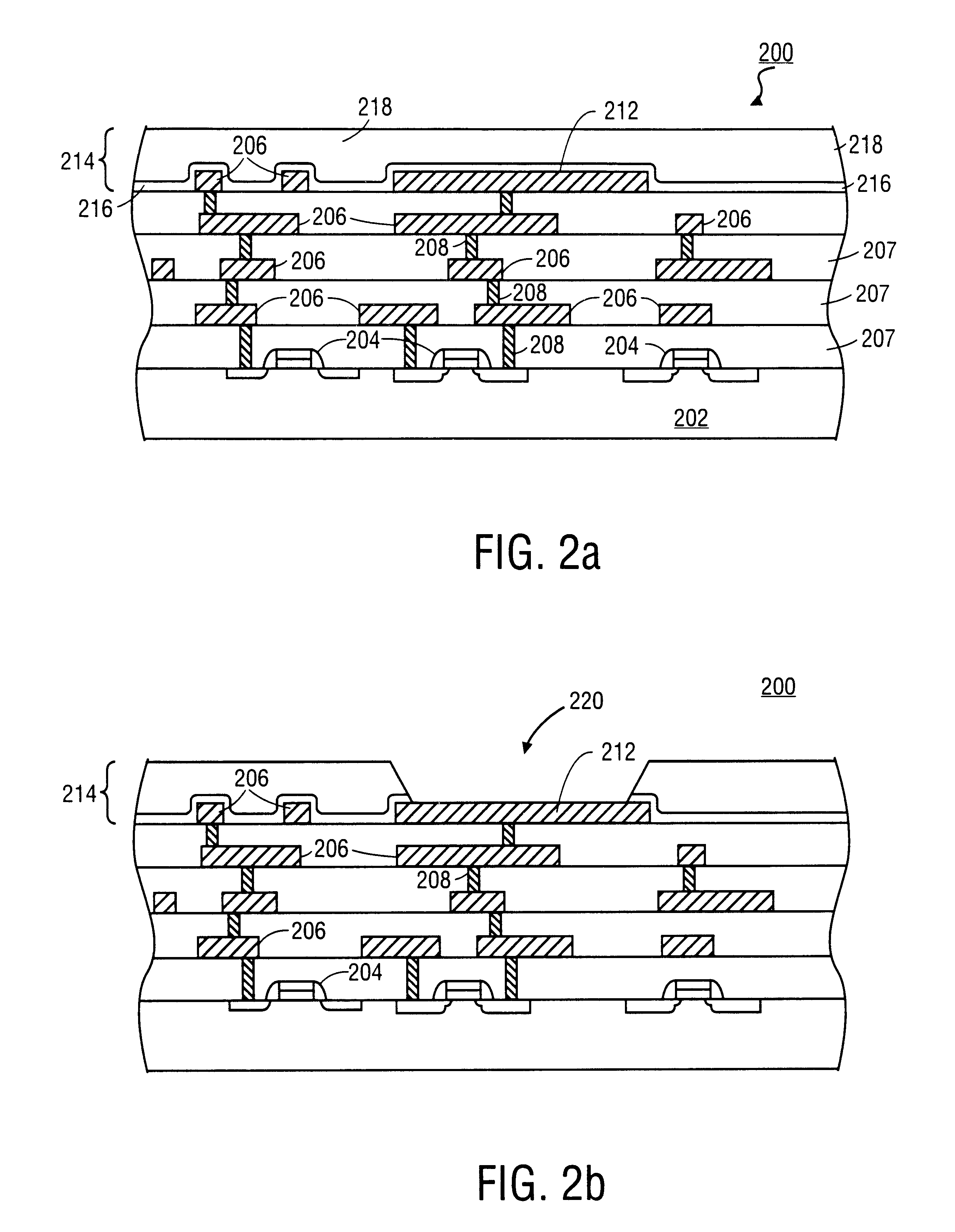Ball limiting metallurgy for input/outputs and methods of fabrication
a metallurgy and input/output technology, applied in the field of ball limiting metallurgy (blm) for input/output, can solve the problems of large shear stress on a wire lead or bump, intermetallic alloy brittleness, and easy stress cracking of intermetallic alloys
- Summary
- Abstract
- Description
- Claims
- Application Information
AI Technical Summary
Benefits of technology
Problems solved by technology
Method used
Image
Examples
first embodiment
According to the present invention the ball limiting metallurgy (BLM) includes an upper layer 226 which is wettable by solder. According to the present invention the upper lay 226 is a film consisting of nickel, vanadium, and nitrogen. Nitrogen is added to the film to lock the vanadium with nitrogen so that it cannot react with oxygen and degrade the reliability of the BLM. The upper layer 226 includes a suitable amount of nitrogen to sufficiently prevent the oxidation of vanadium in the upper film 226. In an embodiment of the present invention the upper film includes as much nitrogen as vanadium. In an embodiment of the present invention the upper film 226 includes about 8 atomic percent vanadium, about 8 atomic percent nitrogen, and the remainder nickel. The upper nickel-vanadium-nitrogen alloy film 226 can have a thickness between 1000-4000 .ANG..
A suitable nickel-vanadium-nitrogen alloy film 226 can be formed by reactive sputtered utilizing a nickel-vanadium target in an ambient...
second embodiment
In the present invention the upper layer of 226 of BLM 222 is a nickel-niobium (Ni--Nb) alloy. In an embodiment of the present invention the upper layer 226 is a nickel-niobium (Ni--Nb) alloy having approximately 10 atomic percent niobium (Nb) with the remainder nickel (Ni). A nickel-niobium (Ni--Nb) alloy having a thickness between 1000-4000 .ANG. can be used. A suitable nickel-niobium (Ni--Nb) film can be formed by any well-known method such as by sputtering from a nickel-niobium (Ni--Nb) target. A nichel-niobium (Ni--Nb) upper film 226 has shown good reliability.
The BLM 222 acts a diffusion barrier to metals. Depending upon the type of metallurgy selected for bumps and the BLM, additional layers may be inserted between the adhesion 224 and the upper layer 226. The intermediate layer used must have good adhesion to both the adhesion layer 224 and the upper layer 226.
Next, a bump 228 is formed on BLM layer 222 over bond pad 212. A bump 228 can be formed, by for example, forming a p...
PUM
| Property | Measurement | Unit |
|---|---|---|
| thick | aaaaa | aaaaa |
| thickness | aaaaa | aaaaa |
| diameter | aaaaa | aaaaa |
Abstract
Description
Claims
Application Information
 Login to View More
Login to View More - R&D
- Intellectual Property
- Life Sciences
- Materials
- Tech Scout
- Unparalleled Data Quality
- Higher Quality Content
- 60% Fewer Hallucinations
Browse by: Latest US Patents, China's latest patents, Technical Efficacy Thesaurus, Application Domain, Technology Topic, Popular Technical Reports.
© 2025 PatSnap. All rights reserved.Legal|Privacy policy|Modern Slavery Act Transparency Statement|Sitemap|About US| Contact US: help@patsnap.com



